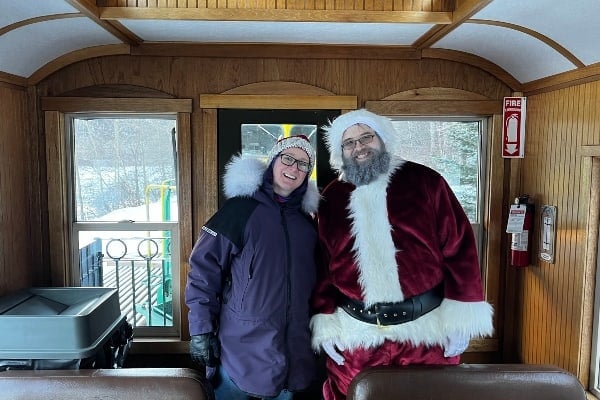November and most of December were mild in the Klondike this winter. Wondrously, it only took two-and-a-half days to warm up St. Paul’s Anglican Church enough to have a comfortable ecumenical Christmas Eve pageant. The building is primarily heated by a large, hungry wood stove. After the chill is off, and the temperature is up to zero, we turn on a couple of oil-fired monitors to speed the process.
What worked at Christmas, when the temperature hovered in the minus teens, didn’t work as well about a week later when we had to heat the building again to hold a funeral service. At that point, the temperature had dropped into the negative-30s. Two day’s heating was not enough; people couldn’t take off heavy coats. Sitting in the choir, I would have appreciated another sweater.
Barring another funeral, we probably won’t use the pro-cathedral (the official name for the building that used to be the Anglican cathedral in the Yukon) again until Easter. It’s too expensive and too much work to heat the large building for weekly services. In the winter, we gather next door in the smaller Richard Martin Memorial Chapel. It can be crowded, but we take that as a sign that people are interested in what is being offered.
Nevertheless, the main building was constructed in 1902 (making it a designated National Historic Site), and has had to suffer the rigours of the Klondike climate ever since. It stands to reason that a fair amount of repair and maintenance will be required. Over the past nearly 20 years the congregation has undertaken projects to both improve and maintain the properties, which, along with the church and the chapel, include the Anglican thrift store, which is attached to the chapel, as well as Skinner House, the rectory.
The church was originally constructed with funding from the placer miners of the Gold Rush era, but the money needed to fix the roof, add some fans to improve the heating system, reinstall rain gutters to prevent wood rot, and repaint the building, isn’t going to come from that source these days. The congregation has been raising money through projects like recycling efforts, yard sales, and pancake breakfasts.
But, as with most projects of this nature, much of the funding will have to come from a variety of federal, territorial, agency, and denominational grants. The restorations and building committee has been spent many hours preparing grant applications. Local contractors generously provide estimates and advice. Much of the paperwork has been filed as of the date I am writing this column, and now we await the results of our endeavours.




